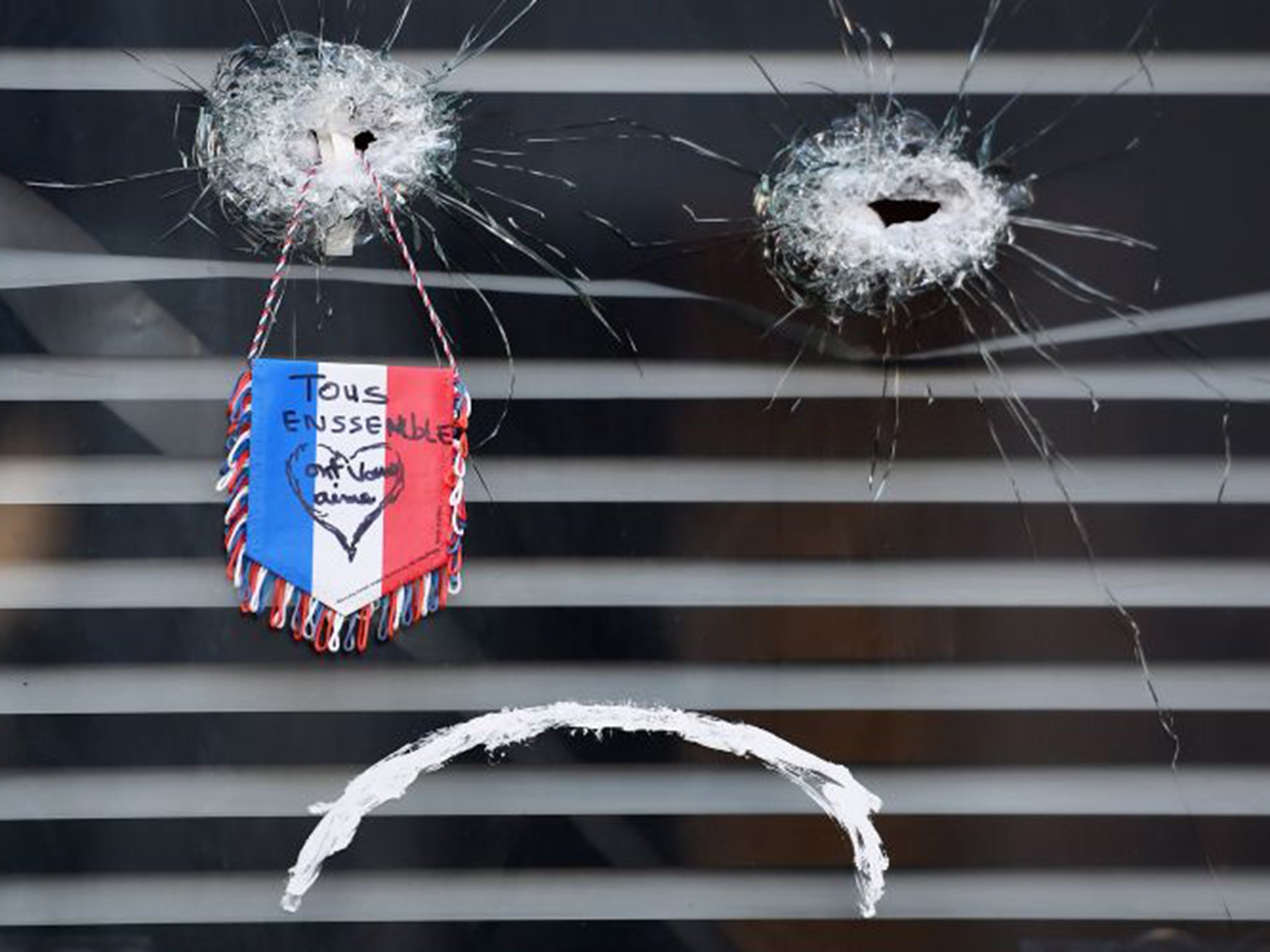Conclusions that we can begin to draw on profile of the Paris attackers
A former intelligence officer says that the levels of coordiantion involced in the attack show that this was probably not an attack developed in the West

Your support helps us to tell the story
From reproductive rights to climate change to Big Tech, The Independent is on the ground when the story is developing. Whether it's investigating the financials of Elon Musk's pro-Trump PAC or producing our latest documentary, 'The A Word', which shines a light on the American women fighting for reproductive rights, we know how important it is to parse out the facts from the messaging.
At such a critical moment in US history, we need reporters on the ground. Your donation allows us to keep sending journalists to speak to both sides of the story.
The Independent is trusted by Americans across the entire political spectrum. And unlike many other quality news outlets, we choose not to lock Americans out of our reporting and analysis with paywalls. We believe quality journalism should be available to everyone, paid for by those who can afford it.
Your support makes all the difference.This is exactly what the intelligence community has feared and planned for since the Mumbai attacks of 2008. Coordinated and simultaneous attacks against multiple targets in a major capital city.
More information will emerge on the identities and histories of the attackers (and much of the initial information will prove to be false) but we can draw a number of initial conclusions.
The coordination, use of suicide vests and scale of the attacks suggests that an attacker or a yet-to-be identified attack planner is likely to have returned from Syria or Iraq. This is not a skill-set easily developed in Western suburbia following online instructions.
Similarly, the complexity of the plan, acquisition of weapons and explosives, and involvement of at least 7 individuals indicates that this operation was not organised overnight.
Typically, a longer planning stage, particularly with so many people involved, increases the chances of mistakes being made. Intelligence agencies rely on these mistakes - from poor communications security to the acquisition or testing of equipment - to identify complex threats.
To have kept this under wraps, potentially while communicating with the heavily-surveilled Isis senior leadership, would have required a sophisticated understanding of operational security and counter intelligence measures.
Given these factors, it is likely that someone involved in the plot has been ‘on the radar’ of intelligence agencies. Whether this constitutes an intelligence failure will depend on who knew what and when.
Was all relevant information provided to those that needed it? Were warning signs missed? Or were authorities looking in the right place but unaware of the threat due to resource constraints or access limitations? Reports linking the attackers to Belgium show that whatever the answer, the French are not solely responsible. This is an international problem requiring an international solution.
Identifying the attackers and attack planners is the priority. Was this planned and directed by Isis in Syria or Iraq, or planned locally with ISIS oversight and input? Are those responsible planning follow-up attacks?
Answering these questions will help us understand the shift in Isis strategy that the Paris attack, Thursday’s bombing in Beirut and possible Isis involvement in the Metrojet crash represents. This shift appears to reflect changing priorities rather than an increase in Isis capability – they had capacity to prioritise attacks like this before. So most importantly, we need to understand what has changed and what Isis hopes to achieve.
Despite the attacks, and the disjointed nature of the anti-Isis coalition, there are signs that the tide is turning against Isis in Iraq and Syria. The success of the Kurdish offensive in Sinjar has been all but forgotten in the wake of Beirut and Paris. At a time of relative weakness and vulnerability, Isis is attempting to project power and strength. And create the impression that they can strike at will. Public and media perception is critical to the Isis narrative.
So, until we know who planned the attack and why, it is impossible to know how it could have been prevented. Or what response is needed – both in the West and in the Middle East – to prevent future attacks.
David Wells is a former UK and Australian intelligence officer, specialising in understanding and countering the terrorist threat.
Join our commenting forum
Join thought-provoking conversations, follow other Independent readers and see their replies
Comments